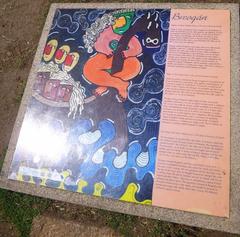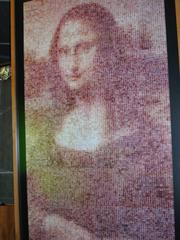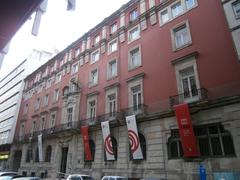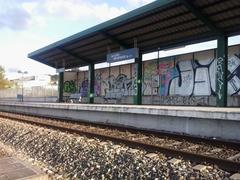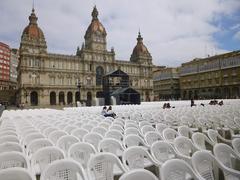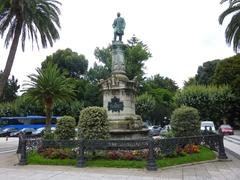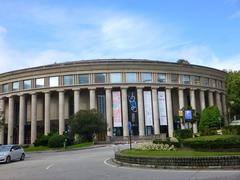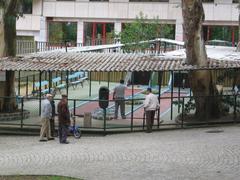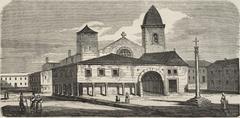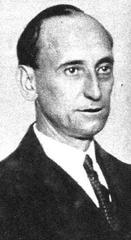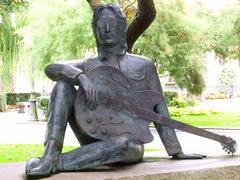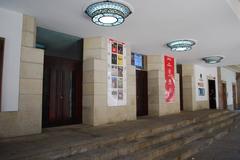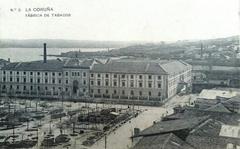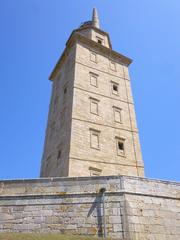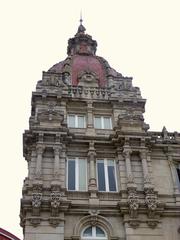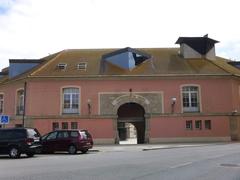
La Coruña-Término Station: Visiting Hours, Tickets, and Travel Guide — A Coruña, Spain
Date: 03/07/2025
Introduction to La Coruña-Término Station
La Coruña-Término Station, also known as Estación del Norte or San Cristóbal Station, is a landmark deeply woven into A Coruña’s urban and cultural history. Built as part of the 19th-century effort to connect Galicia with Spain’s national railway network, the original station symbolized the city’s integration into broader trade and travel routes. Though the first station, constructed between 1872 and 1883, was lost to a fire in 1964, its successor—San Cristóbal Station—remains an architectural and transportation centerpiece. This guide provides a detailed overview of the station’s evolution, architectural highlights, practical visiting information, and tips for exploring nearby attractions in A Coruña.
For updated details and travel planning, see resources like the official ADIF project page, VisitCoruna, and Wikipedia.
Table of Contents
- Introduction
- Historical Overview
- Architectural Features & Legacy
- Role in the Spanish Railway Network
- Modernization & Redevelopment
- Visiting Information
- Local Transportation & Accessibility
- Key Attractions Near the Station
- Cultural Insights & Travel Tips
- FAQ
- References
Historical Overview
Origins and Early Development
The history of La Coruña-Término Station began in 1858 with Queen Isabel II laying the cornerstone for the Palencia–A Coruña railway (gl.wikipedia). After several years of engineering challenges, construction started in 1872, leading to the opening of a provisional station in 1874 and the completed line in 1883, inaugurated by King Alfonso XII (wikiwand). This connected A Coruña to Spain’s broader railway network, greatly enhancing trade and mobility.
Transition and Demise
By the early 20th century, increasing passenger numbers required a new station. San Cristóbal Station was inaugurated in 1927 in the Gaiteira neighborhood, designed in a striking neoromanesque style by Antonio Gascué Echevarría (lavozdegalicia). After a devastating fire in 1964, the original station closed, and its location now hosts the city’s bus terminal and commercial developments.
Architectural Features & Legacy
San Cristóbal Station, officially opened in 1935, is celebrated for its neoromanesque facade and use of local Galician granite (becoration.com). With a monumental scale and decorative arches, it set a standard for Spanish railway architecture. Recent renovations have preserved these features while integrating contemporary amenities, including a modern concourse and advanced passenger facilities.
Role in the Spanish Railway Network
Initially operated by the Compañía de los Caminos de Hierro del Norte de España, the station was pivotal in connecting Galicia with Madrid, Barcelona, and other key cities (en.wikipedia). Its use of the broad Iberian gauge remains a unique aspect of Spain’s railway infrastructure.
Modernization & Redevelopment (2022–2026)
Major Redevelopment Project
San Cristóbal Station is currently undergoing a significant €80.6 million redevelopment, co-financed by the European Union’s NextGenerationEU fund (ADIF redevelopment). The project aims to:
- Preserve the Historic Canopy: Transforming it into a glass-enclosed concourse for enhanced passenger experience.
- Upgrade Platforms: New roofs and reorganized layouts for improved traffic flow.
- Improve Accessibility: Expanded pedestrian routes, parking (575 spaces), and seamless integration with local buses.
- Add Technological and Sustainable Features: New signaling, communications, and eco-friendly facilities.
Provisional Station (Dec 2024 – June 2026)
During construction, a temporary station 350 meters from the original site provides full passenger services, including ticketing, waiting areas, a café, and accessible facilities (COPE coverage).
Visiting Information
- Location: Avenida do Ferrocarril, s/n, 15007 A Coruña.
- Visiting Hours: Daily, 5:00 AM–11:00 PM (including provisional station during works).
- Tickets: Purchase at ticket counters, automated machines, or online (Renfe), (Omio). Advance booking recommended for high-speed or long-distance routes.
- Accessibility: Ramps, elevators, tactile paving, and adapted restrooms throughout; assistance available on request.
- Facilities: Left-luggage office, free WiFi, shops, restrooms, and multilingual information desks.
Local Transportation & Accessibility
- City Buses: Extensive network connects the station with the city center, beaches, and major sites (Bus.gal), (WhatsInPort).
- Taxis: Stand outside the station; city center rides typically €7–10.
- Car Rental: Agencies at the station and airport.
- Regional and National Buses: Main bus station 2 km away (city bus or taxi connects easily).
- Airport: Alvedro Airport (LCG) 8 km north (bus line 4051, 25 min), Santiago de Compostela Airport (SCQ) accessible by train or car.
Key Attractions Near the Station
- Plaza de María Pita: Lively central square with City Hall, cafes, and historic atmosphere (Lonely Planet), (Spainguidenow).
- Old Town (Ciudad Vieja): Medieval streets, churches, and picturesque squares (Galicia Travels).
- Tower of Hercules: UNESCO World Heritage lighthouse, panoramic Atlantic views (Lonely Planet).
- Castillo de San Antón: 16th-century fortress and archaeological museum (Spainguidenow).
- Casa Museo Picasso: Childhood home of Picasso, early works and memorabilia (Lonely Planet).
- Casa das Ciencias & Parque de Santa Margarida: Interactive science museum and green park (Spainguidenow).
- Museo Nacional de Ciencia y Tecnología (MUNCYT): Free-entry technology museum (Lonely Planet).
- Riazor and Orzán Beaches: Central urban beaches with promenade and restaurants (Victoria Camps).
- Monte de San Pedro: Panoramic city and ocean views, landscaped gardens (Lonely Planet).
Cultural Insights & Travel Tips
- Galician Culture: Bilingual region (Spanish and Galician), with a strong identity reflected in festivals and local gastronomy (The Orange Backpack).
- Cuisine: Try seafood, octopus, and tapas around Plaza de María Pita (Galicia Travels).
- Architecture: Signature galerías (glass-enclosed balconies) line many streets.
- Shopping: Visit San Agustín Market and local artisan shops.
- Accessibility: Most major sites offer wheelchair access; some cobbled streets may be uneven.
- Language: English is spoken in main tourist areas.
- Travel Tip: Use city buses and walking to explore; parking near the station is limited.
Frequently Asked Questions (FAQ)
Q: Can I visit the original La Coruña-Término Station?
A: No, the original station was destroyed in 1964. San Cristóbal Station is its successor and is open to visitors.
Q: Where can I buy train tickets?
A: At the station, via Renfe, Omio, or mobile apps.
Q: Is San Cristóbal Station accessible?
A: Yes, it is fully accessible with elevators, ramps, and adapted restrooms.
Q: What are the best ways to reach city attractions from the station?
A: City buses, taxis, and walking are all convenient. Bus lines 1A, 3, 3A, and 5 connect to main sites.
Q: Are there guided tours?
A: Local operators offer city and historic tours. Check with the tourism office or online platforms for schedules.
Summary & Visitor Recommendations
La Coruña-Término Station is a testament to A Coruña’s historical transformation and modern ambitions. Its current redevelopment ensures both heritage preservation and state-of-the-art transport facilities. Use the station as a base to explore Galicia’s culture—visit nearby sites like the Tower of Hercules and Plaza de María Pita, sample Galician cuisine, and experience the city’s vibrant atmosphere. For the latest travel updates, ticketing, and redevelopment news, rely on official platforms such as ADIF, Renfe, and local tourism offices.
Plan your visit confidently and make the most of this iconic gateway to A Coruña and Galicia.
References
- Estación da Coruña-Término — Wikipedia
- VisitCoruna — Official Visitor Information
- Spainguidenow — Things to Do in A Coruña
- ADIF — Station Redevelopment Details
- COPE — Provisional Station Coverage
- Becoration.com — Station Renovation
- Renfe — Official Train Services



